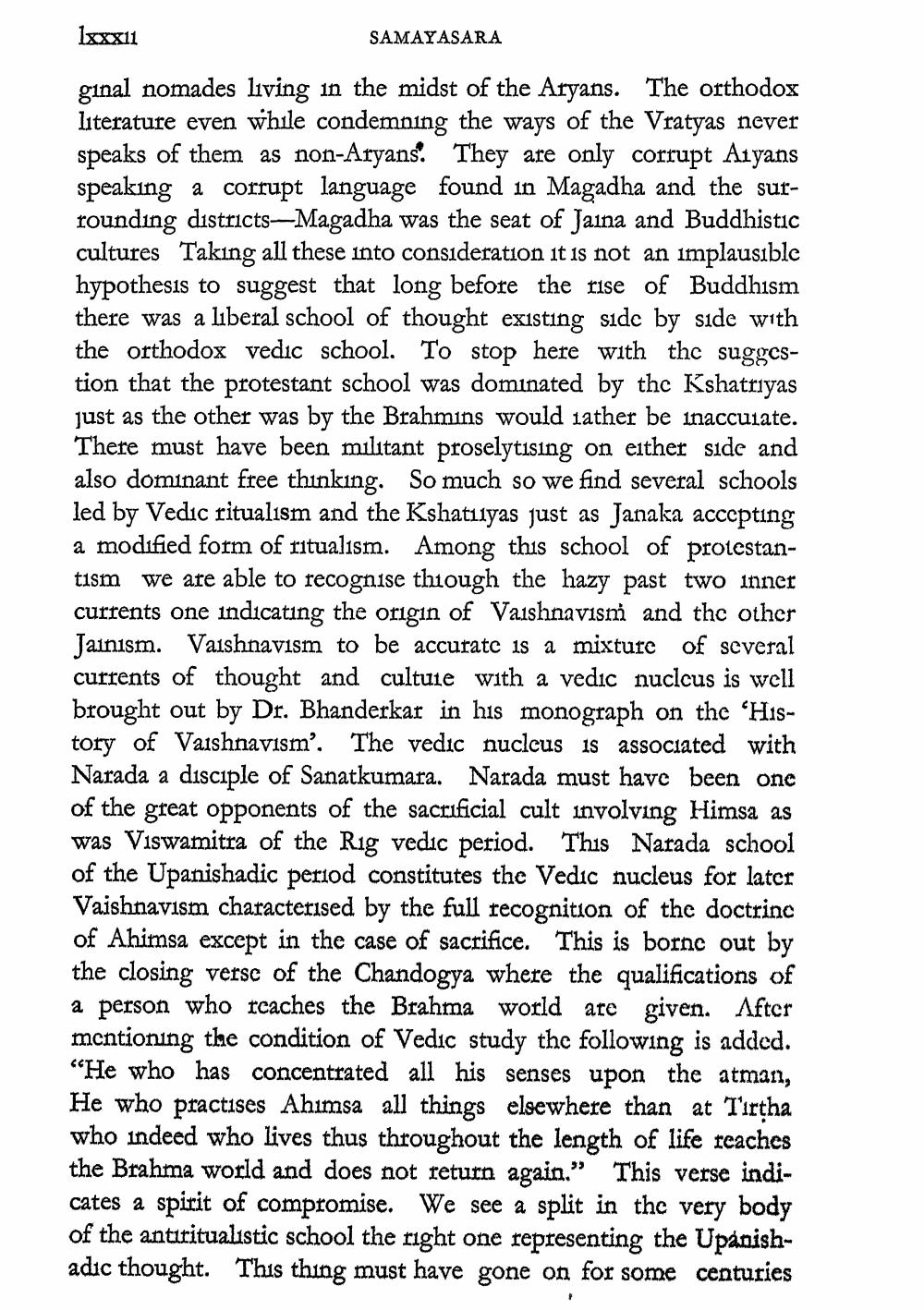________________
Ixxx11
SAMAYASARA
ginal nomades living in the midst of the Aryans. The orthodox literature even while condemning the ways of the Vratyas never speaks of them as non-Aryans. They are only corrupt Alyans speaking a corrupt language found in Magadha and the surrounding districts—Magadha was the seat of Jaina and Buddhistic cultures Taking all these into consideration it is not an implausible hypothesis to suggest that long before the rise of Buddhism there was a liberal school of thought existing side by side with the orthodox vedic school. To stop here with the suggestion that the protestant school was dominated by the Kshatriyas just as the other was by the Brahmins would lather be inaccurate. There must have been militant proselytising on either side and also dominant free thinking. So much so we find several schools led by Vedic ritualism and the Kshatilyas just as Janaka accepting a modified form of ritualism. Among this school of protestantism we are able to recognise thiough the hazy past two inner currents one indicating the origin of Vaishnavisni and the other Jainism. Vaishnavism to be accurate is a mixture of several currents of thought and culture with a vedic nuclcus is well brought out by Dr. Bhanderkar in his monograph on the 'History of Vaishnavism'. The vedic nuclcus is associated with Narada a disciple of Sanatkumara. Narada must have been one of the great opponents of the sacrificial cult involving Himsa as was Viswamitra of the Rig vedic period. This Narada school of the Upanishadic period constitutes the Vedic nucleus for later Vaishnavism characterised by the full recognition of the doctrine of Ahimsa except in the case of sacrifice. This is borne out by the closing verse of the Chandogya where the qualifications of a person who rcaches the Brahma world are given. After mentioning the condition of Vedic study the following is added. "He who has concentrated all his senses upon the atman, He who practises Ahimsa all things elsewhere than at Tirtha who indeed who lives thus throughout the length of life reaches the Brahma world and does not return again.” This verse indicates a spirit of compromise. We see a split in the very body of the antiritualistic school the right one representing the Upanishadic thought. This thing must have gone on for some centuries




